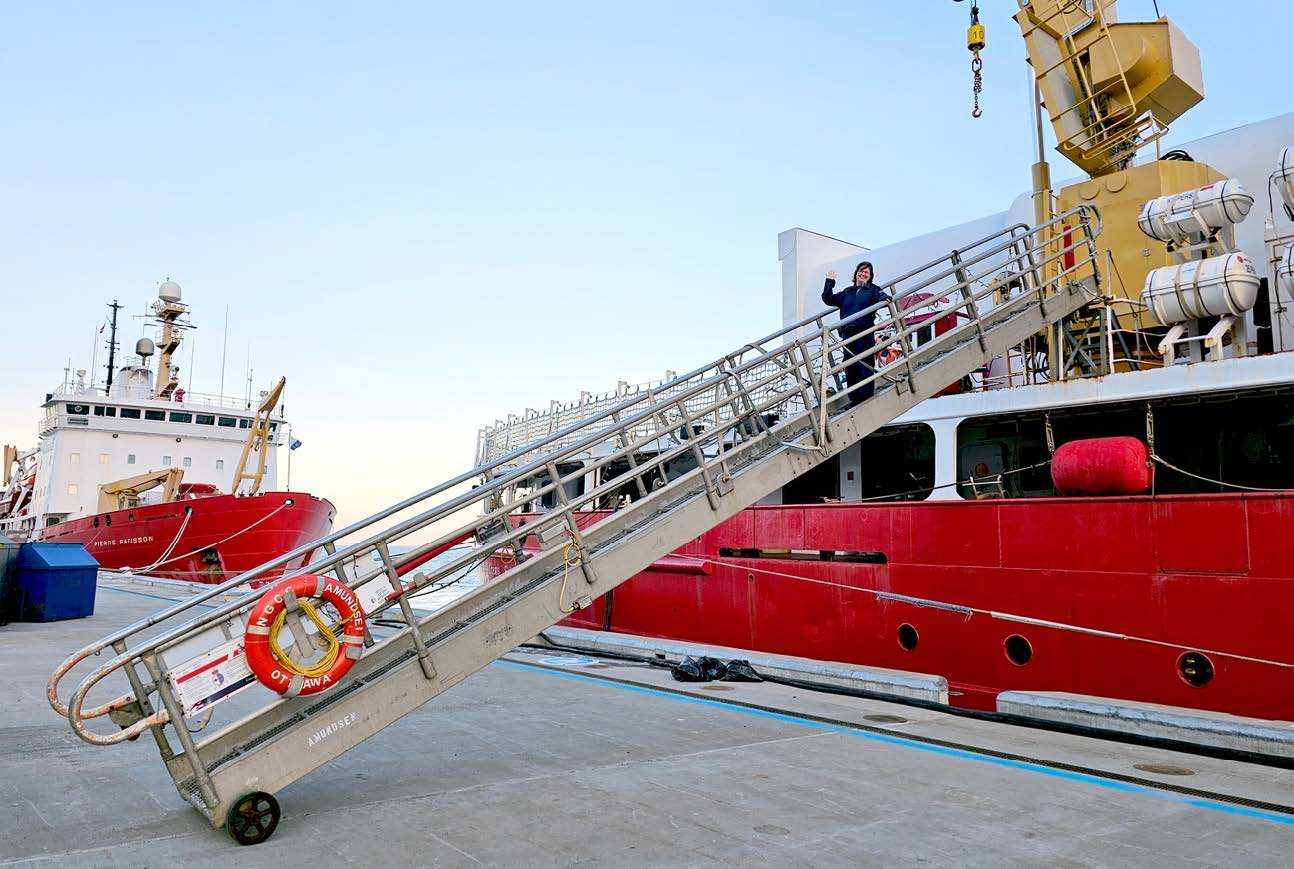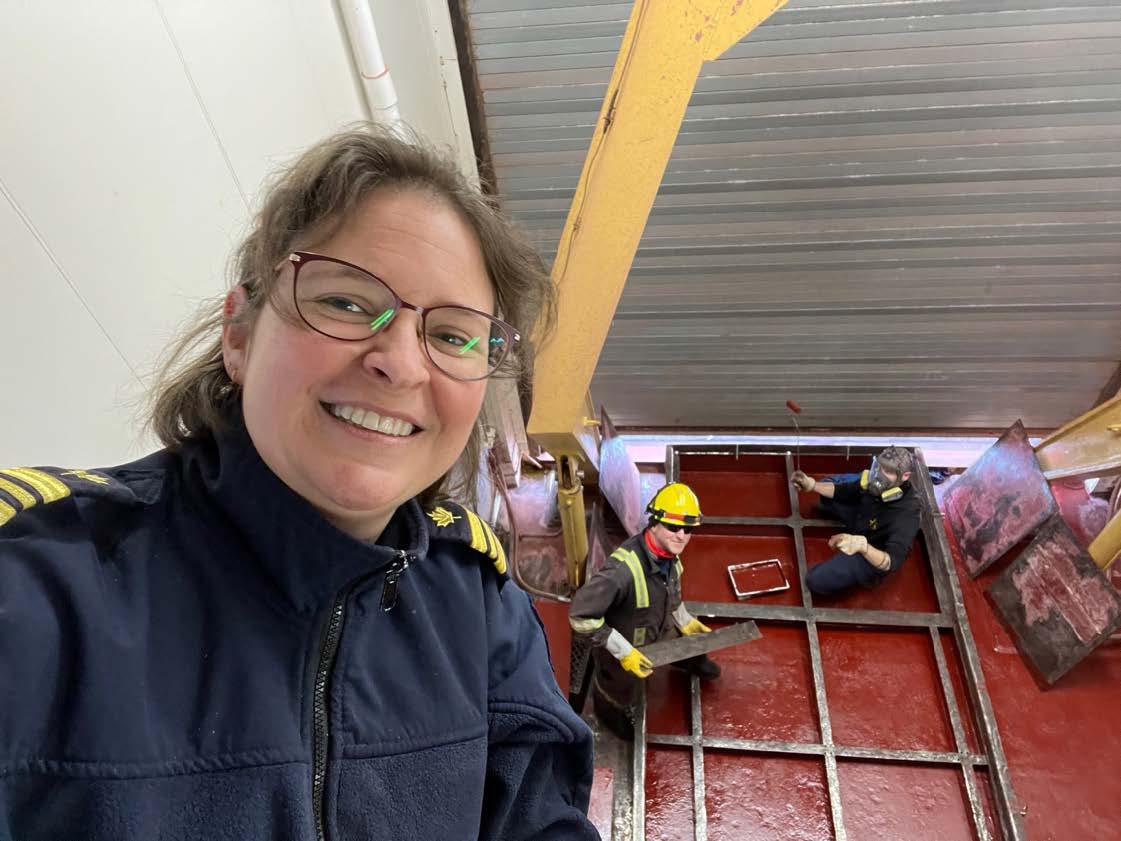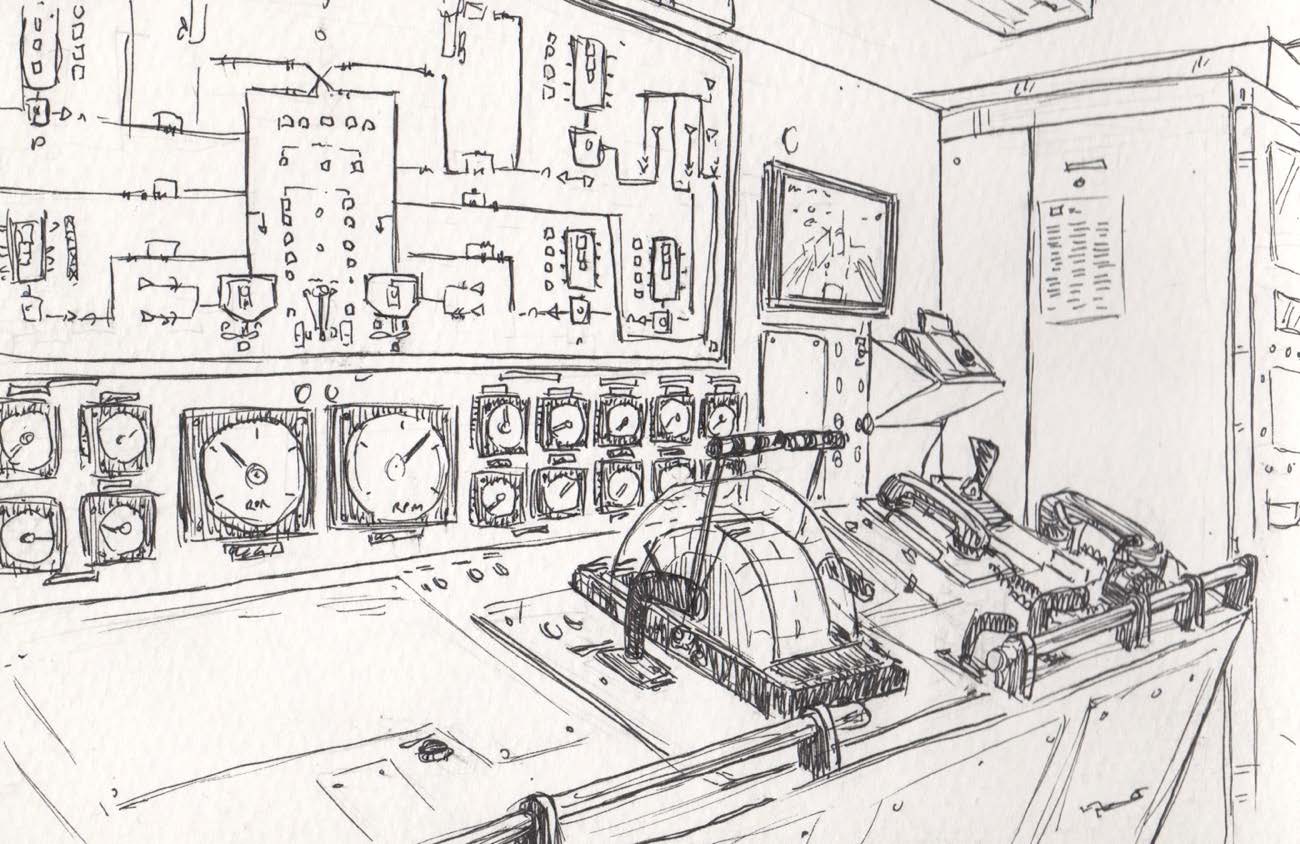Location: variable but within Canadian waters
Size: 20x100m
Population: 40 and can go up to 80 in summer time.

Welcome on board the CCGS Amundsen – a Canadian Coast Guard Icebreaker!
My name is Emilie. I’m a navigator and an urban sketcher. I’ve been sailing in Canadian waters for over 20 years now.
People are usually curious when they learn what I do and want to know more about it. So, when I saw the opportunity to share the sketches I drew onboard over the years, and give you a glimpse of what a life at sea is like, I had to take it!
The Canadian Coast Guard: never heard of it? It’s a governmental organization that provides various services on our waters: search and rescue, buoy tending, icebreaking, science, and a few more.
During the winter, the Amundsen is usually tasked to the icebreaking program and sails on the St-Lawrence Gulf and River between Montreal and Blanc Sablon.
We monitor and manage the ice conditions to minimize the chance of flooding and we provide assistance to commercial shipping. It might be hard to believe, but ice under pressure can stop huge ships from getting to their destination. They need our help to get through the heaviest conditions. We are smaller but we have a lot of power and a special hull shape that allows us to get through the ice more easily.

During the Summer, we go to the Canadian Arctic and provide a platform for scientists from around the world to collect data that they bring home to study.
It’s a unique collaboration with Amundsen Science (hosted by Laval University) that began in 2002. Since then, 1330 scientific articles were published based on data collected on board by over a thousand scientists.

When the ship leaves for its Arctic trip, it’s gone for 4 to 5 months! But do not worry, I do not stay on board for that long! We have a ‘layday’ system: each ship has 2 crews. So, when one is on board, the other is at home. We work on 4-week rotations: 12-hour days, 7 days a week.
So, a ship being away for so long, it has to be self-reliant. It’s like being on a little city… that floats!
We have a mayor (aka the Captain) who oversees life on the ship: she makes sure that the job gets done and always in a safe manner.
We have 3 different neighborhoods onboard: the deck, logistics, and the engine room. The Captain’s council is made up of 3 advisers that each manage their own hoods: the Chief Mate, the Logistics Officer and the Chief Engineer.
During the summer, our city is flooded by hard-working tourists (the scientists): the population doubles!
So, now that you know a little bit more about what we do and how it works, would you like to join me for a sketched tour of my floating city?

When we get on board, we all get assigned an apartment (a cabin) and sometimes it happens to come with a roommate.
This is my apartment. It’s spacious, I have a great view of the front deck, and a bathroom that I share with only one of my colleagues. It even comes with a comfy chair that I tend to use as a wardrobe. But the best thing about my apartment, is that it’s about 2 minutes walking distance from my work place!
If, while we’re unpacking, we realize we forgot to bring a toothbrush, or after a hard day at work we have a craving for chips, it’s not the end of the world: we have a corner store! It opens only twice a day, but we all know the manager…
Exercise is important for our well-being. We can take a walk around the ship, but we can finish that tour quite rapidly. Another option is to go to the gym! It’s a little small, and can be quite dangerous in heavy seas…. But how many people can say that, while they were jogging, they passed by icebergs and chatted with sea birds?
What if we hurt ourselves or get sick, and we need to go to the hospital? During the winter, we will be transferred to a hospital ashore in a timely (enough) fashion. But when we are in the Arctic, it’s a little more complicated. A colleague of mine hurt her ankle and it took two weeks to get her off the ship (weather conditions, and flight availability can really be tricky up there). But don’t worry, my friend was well taken care of because we carry a nurse onboard for Arctic voyages, and she has her own little hospital.
After working hours, what can we do? We have a social area with a ping pong table, video games, board games and my favorite: a foosball table (playing can be quite interesting in significant sea conditions…).
During the Arctic trip, a few activities are organized each week like Trivia or karaoke nights but I have to say that my favorite nights are when my colleagues decide to play their music for us!
The Deck Hood:
Welcome to my hood! As a navigator I’m part of the Deck hood. And I work on the top floor, the office with the nicest view: the Bridge.
Contrary to popular belief, the Captain is rarely in charge of navigation. We have 3 teams of 2 people that take care of it in turn: an Officer of the Watch (of which I am one) and a Quartermaster. It’s the Quartermaster that actually steers the ship, following the orders given by the Officer. Simply put, I look outside, and at my instruments, and provide safe courses that the Quartermaster steers by. I guess you could say I am a professional back seat driver.

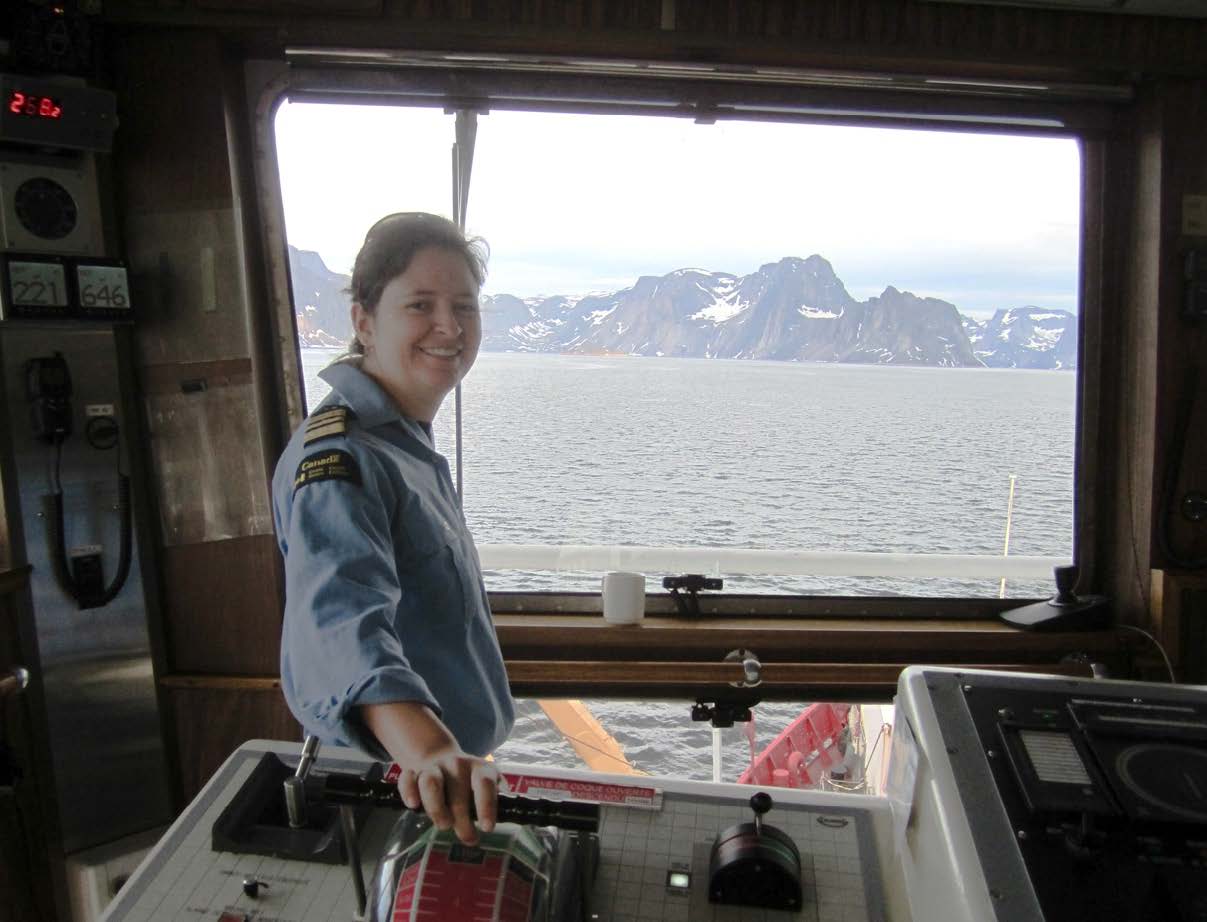
However, the Captain is in charge of navigation in special circumstances, such as docking, escorting ships, some specific science operations as well as in difficult weather and ice conditions. She’s also available to us 24/7 if we have any doubts.
In addition to navigating the ship, one of my tasks is to prepare our passage plans. Paper charts?! Yes! Especially in the Arctic! But we are slowly transitioning more toward electronic charting systems.
The Deck Gang:
In addition to the bridge team, there is a deck gang hanging in the hood. These Deckhands take care of the ship (painting, cleaning, snow shoveling, …). Their days are spiced up with cargo handling, workboat rides and flight deck operations.
But their favorite job comes along when it’s time for the science program. They mainly work on deck collecting samples with eager scientists: loads of water samples, critters living on the sea bed, mud (uh…I mean sediment), pictures, ice and more. Here they are using an IKMT. What on earth is that you might ask: it is a horizontal net we use to catch fish.


The Invasion of tourists, a not-so-hostile takeover:
Many spaces onboard are already dedicated to science, yet even more laboratories keep popping up. They’ve even asked (nicely) to add holes in the ship!
During mobilization for our Arctic trip, the scientists fill all of the ship’s laboratories and every available space with all sorts of unidentifiable equipment! Once this is done, we head North.
The favorite activity for our scientists is sampling water. It is from this Rosette control center that scientists monitor and manage the opening and closing of the rosette’s 24 bottles that collect water at various depths, even as deep as 3500m!
So, remember the holes mentioned earlier? Hiding below this hatch cover is the moon pool, a hole that is 9 m deep and 2.4 m wide. From here, a variety of instruments can be deployed and our deck gang and tourists get to stay warm and dry. But they have an additional task as a lookout, because the moon pool can sometimes be an interesting rest stop for curious critters.
The Engine Room Hood:

The control room, this is where the engine room hood monitors the propulsion system. While I’m doing my watch on the bridge, the Engineer and 2 Oilers (they have 3 teams of 3 that take turns) will make sure that all machinery is in fine working order and that immediate action is taken if trouble arises. We can count on them to make sure we remain in control of the ship, and keep our crew safe at all times.


The ship can go up to a speed of 16 knots (30 km/h) when using all of the engines.
This hood is also responsible for all of the equipment (other than electronics) that allows us to be at sea for an extended period of time. They take care of: the evaporators that create potable water from the sea water we float on; the sewage treatment system that is necessary since it can’t go overboard or stay onboard as toilet waste; the generators that create our electricity; and so much more. They are our plumber, electrician, welder, handyperson, …
All to say that there is plenty to do for the engine room hood to keep busy!
The Logistics Hood:
This is the hood where you find the restaurant (the Galley or for you landlubbers, the cafeteria)!

The Cooks have one of the most important jobs on board: Well fed sailors are happy sailors! Happy sailors are extremely important since we live in such close proximity over long periods of time.
And I have to say that we are currently an extremely happy crew! Now a days, the resto is run by Yann and his team, and the food has been amazing! The menu is varied and healthy but there is always a place for the comfort junk food from time to time!
The cooks also help us keeping track of time. The breakfast menu is constant. So, I know that if I’m eating a grilled cheese, it’s Monday. But if I am eating crepes, it’s Thursday! Very practical when you don’t have week-ends off to give you a sense of time. We also use the breakfast to know how many days we have left onboard: if this is the last French toast, I know I’m going home in 2 days!
In addition to being a great restaurant, the galley is a nice place for the different hoods to get together at break time. People chat while eating various delicious homemade cookies and pastries.
The taxi service:
When we are in the Arctic, we always have a helicopter Bell 429 on board: a very expensive taxi service that comes with its Pilot and Mechanic.
The helicopter has various uses like: when the ice conditions are difficult, it flies ahead of the ship with an Ice Observer to help determine the easiest route for the ship to take through an ice field.
It carries the scientist to different places that the ship can’t access for more sampling like on amazing glaciers.
The helicopter is also extremely useful when we get a search and rescue call. It can cover grounds way faster than the ship (it can go up to 260km/h with a range of 645 km) and its view from high up in the sky makes it easier to spot something on the water.
Its busiest day though is surely on a crew change day in the Arctic. The ship stays up North all summer, but every 4 weeks, the crew changes. We fly from Quebec City to join the ship and once we arrive at the airport, the helicopter flies us onboard. The pilots will do around 26 helicopter rides (6 people at the time) to get us on/off the ship .

The unique wildlife:
And what to say for the unique wildlife? This sketch is done from a picture I took on my phone as these bears watched me sail by, no time for live sketching when I’m navigating.
Many years ago, as a young officer, I was on watch while stopped in ice for the night. At 2 in the morning, a curious polar bear came over for a visit. So, I decided to be curious as well, and headed out to see him from the upper deck. He put both of his paws up on the hull of the ship and sniffed me out. We talked for a while. It was amazing.
The city that doesn’t float:
Just like our car, from time to time, the ship has to be taken in for maintenance and repair. Every couple of years, it goes into dry dock to make sure everything under the water line is ok and to carry out work that can’t be done while afloat.
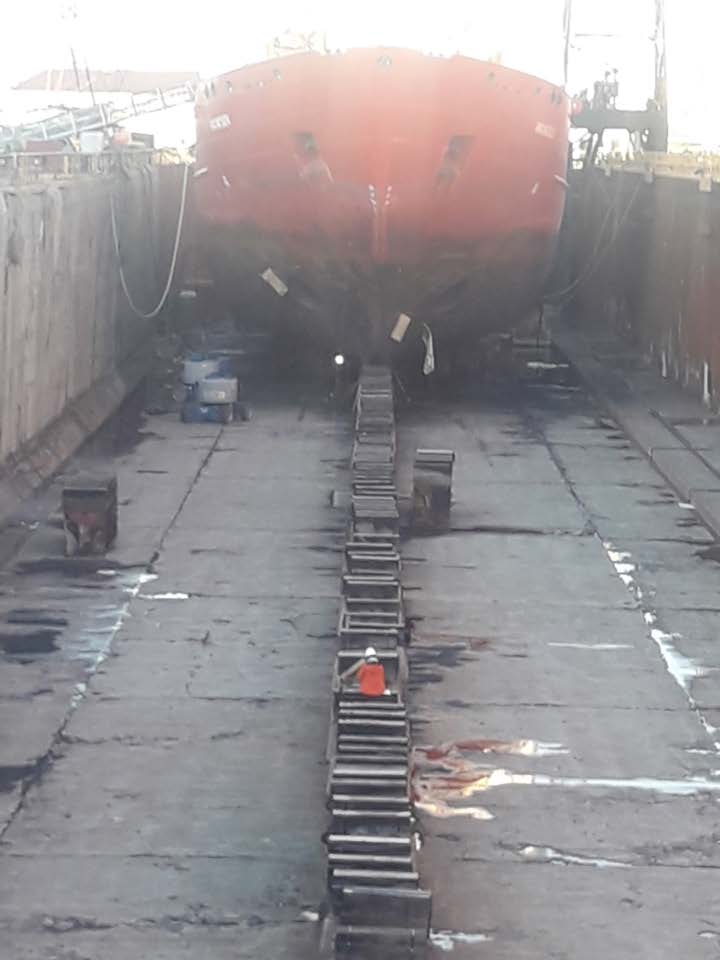
This is it: we have reached the end of our visit. I hope that you have enjoyed this sketched tour of my floating city as much as I have enjoyed sharing it with you. It has been a pleasure to show you a glimpse of the life on board the CCGS Amundsen.
Now there is only one thing left to say before we go our separate ways:
I wish you fair winds and following seas!
Partilha
Recent Posts
Drawing Attention June 2024
Drawing Attention, a zine oficial da organização Urban Sketchers, comunica...
Ler MaisVolunteer Opportunity: Urban Sketchers Seeks Fundraising Director
HOME Are you passionate about art and fostering a global artistic community?...
Ler MaisThe USk Regional Events Grant Funding Programme 2024 / 2025
Season three of the USk Regional Events Grant Funding Programme is...
Ler MaisVisite a nova loja USk
Adivinha só? A nossa loja Urban Sketchers acabou de subir de nível com algumas...
Ler Mais